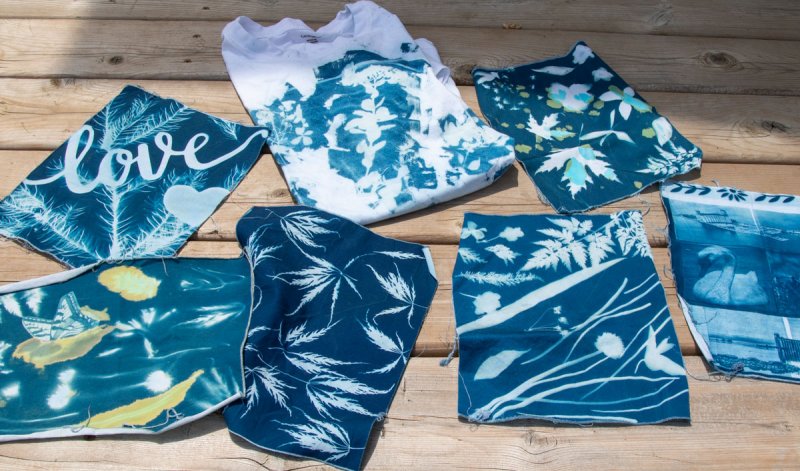I first came across cyanotypes a couple of years ago when I was exploring various techniques for encaustic collage. In addition to embedding photographic images and natural materials, I discovered this photographic process that creates Prussian blue monochromatic prints, developed in the mid-19th century that harnesses the power of the sun to make detailed prints from virtually any object that casts a shadow. These images can be imprinted on fabric, water colour paper, wood and then enhanced with paints or left as is with the monochromatic blue /white impressions.
For those who have not heard of cyanotypes, here’s some background (excerpts from wiki) and a few of my samples follow:
- An image can be produced by exposing sensitised paper to a source of ultraviolet light (such as sunlight) as a contact print.
- After exposure, the paper is developed by washing in cold running water: the water-soluble iron(III) salts are washed away. The parts that were exposed to ultraviolet turn blue as the non-water-soluble Prussian blue pigment remains in the paper. This is what gives the print its typical blue color. The blue color darkens upon drying.
- The simplest kind of cyanotype print is a photogram, made by arranging objects on sensitised paper. Fresh or pressed plants are a typical subject but any opaque to translucent object will create an image. A sheet of glass will press flat objects into close contact with the paper, resulting in a sharp image. Otherwise, three-dimensional objects or less than perfectly flat ones will create a more or less blurred image depending on the incidence and breadth of the light source.
- (from Greek, “Dark Blue”, + “Impression/Mark”)
- Uses two chemicals: – Part A: Potassium Ferricyanide—A red iron salt and Part B: Ferric Ammonium Citrate—A light-sensitive iron salt
- Discovered by Sir John Herschel who in 1842 published his investigation of light on iron compounds
- Anna Atkins, a friend of the Herschel family, over 1843–61 and with the assistance of Anne Dixon, hand-printed several albums of botanical and textile specimens, especially Photographs of British Algae: Cyanotype Impressions,[9] effectively the world’s first photographically-illustrated books
Products available online to produce cyanotypes:
Jacquard
https://www.jacquardproducts.com
https://www.jacquardproducts.com/cyanotype
Kit includes solution, paper, etc
Pre treated sheets
